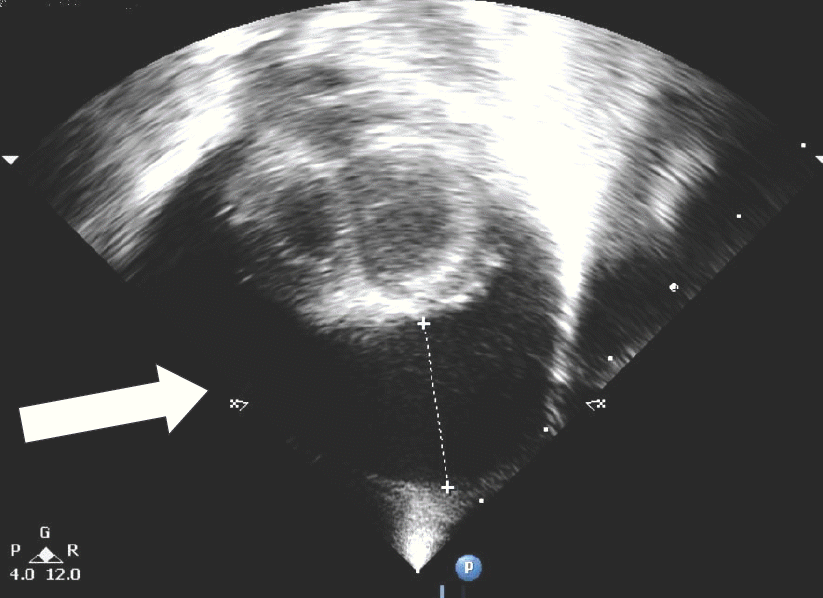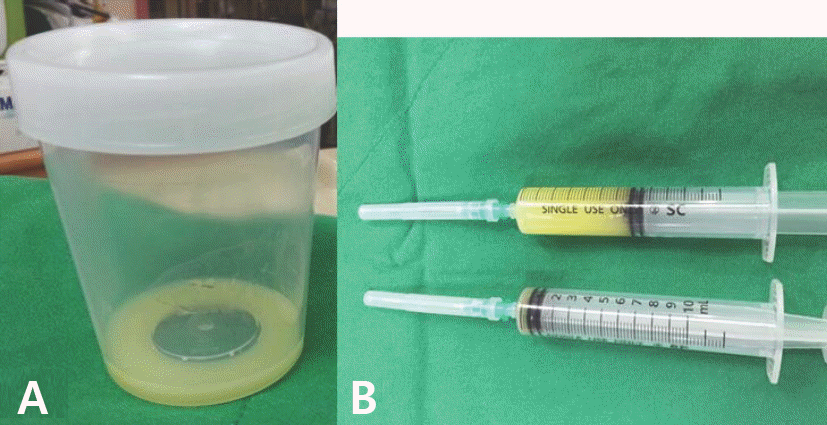Abstract
Although central catheter-related complications are frequently reported and are inevitable in the neonatal care unit, the incidence of pericardiac tamponade is low but may be fatal. Index of suspicion, prompt diagnosis, and urgent pericardiocentesis are crucial for lifesaving. We encountered two premature cases of central venous catheter-related pericardial tamponade. The first case was a 4-day-old male premature infant (gestational age [GA], 33+5 weeks; birth weight [BW], 1,864 g), and the second case was a 4-day-old female premature infant (GA, 28+6 week; BW, 1,050 g). Each infant had an indwelling central venous catheter since birth and at the third day of hospitalization. The conditions of the babies suddenly deteriorated, but both babies were successfully resuscitated with urgent echocardiography and prompt pericardiocentesis.
Go to : 
References
1. Traen M, Schepens E, Laroche S, van Overmeire B. Cardiac tamponade and pericardial effusion due to venous umbilical catheterization. Acta Paediatr. 2005; 94:626–8.

2. Cherng YG, Cheng YJ, Chen TG, Wang CM, Liu CC. Cardiac tamponade in an infant. A rare complication of central venous catheterization. Anaesthesia. 1994; 49:1052–4.
3. Garg M, Chang CC, Merritt RJ. An unusual case presentation: pericardial tamponade complicating central venous catheter. J Perinatol. 1989; 9:456–7.
4. Sridhar S, Thomas N, Kumar ST, Jana AK. Neonatal hydrothorax following migration of a central venous catheter. Indian J Pediatr. 2005; 72:795–6.

5. Dane TE, King EG. Fatal cardiac tamponade and other mechanical complications of central venous catheters. Br J Surg. 1975; 62:6–10.

6. Nowlen TT, Rosenthal GL, Johnson GL, Tom DJ, Vargo TA. Pericardial effusion and tamponade in infants with central catheters. Pediatrics. 2002; 110(1 Pt 1):137–42.

7. Khilnani P, Toce S, Reddy R. Mechanical complications from very small percutaneous central venous Silastic catheters. Crit Care Med. 1990; 18:1477–8.

8. Nadroo AM, Glass RB, Lin J, Green RS, Holzman IR. Changes in upper extremity position cause migration of peripherally inserted central catheters in neonates. Pediatrics. 2002; 110(1 Pt 1):131–6.

10. SK L. Cardiac Tamponade Developed in 12 Hours after Left Internal Jugular Cannulation: A case report. Korean J Anesthesiol. 1998; 35:163–7.

11. JY S. Cardiac Tamponade Occurred during Subclavian Venous Catheterization. Korean J Anesthesiol. 2000; 38:165–8.

12. EJ H. Umbilical venous line-related pleural and pericardial effusion causing cardiac tamponade in a premature neonate: A case report. Korean J Pediatr. 2006; 49:686–90.

Go to : 
 | Fig. 1.An echocardiogram of case 1. The arrow indicates massive pericardial effusion with cardiac collapse. |
Table 1.
Analysis of Pericardial Effusion Fluid




 PDF
PDF ePub
ePub Citation
Citation Print
Print



 XML Download
XML Download